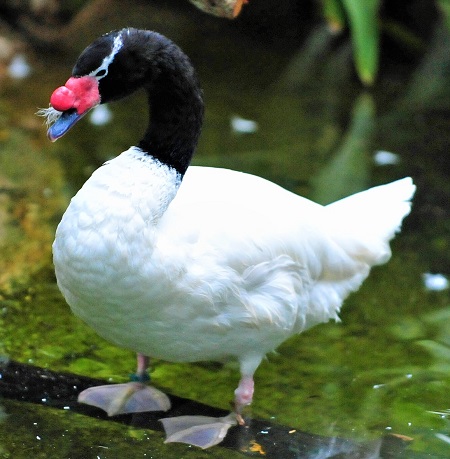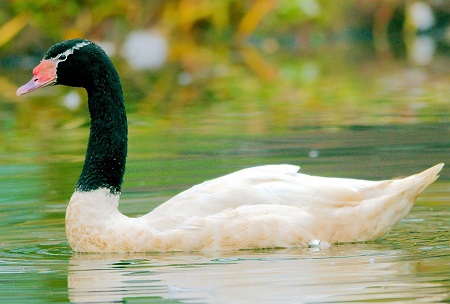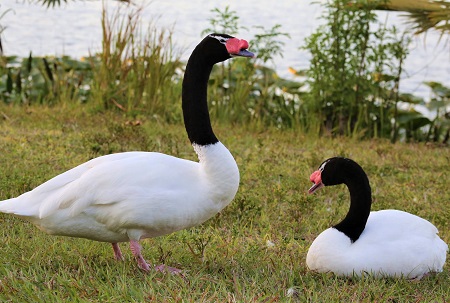Black-Necked Swan
The Black-Necked Swan is the largest Waterfowl native to the continent of South America. Occupying both saltwater and freshwater habitats, this Swan species may be found in swamps, marshes, brackish lagoons, lakes and sheltered coastal areas. The Black-Necked swan mainly inhabits the southern portion of South America, ranging from the Falkland Islands and Tierra del Fuego, northwards to central Chile, Paraguay and southern Brazil.
The Black-Necked swan is easily distinguished by its immaculate white body plumage that contrasts sharply with a velvety black neck and head. Its bill is of a blue-grey color with a conspicuous, scarlet double-lobed knob. The Black-Necked swan has a thin white line surrounds the eyes and stretches along the sides of the crown to the rear of the head, and it has also pink legs and feet.
The Black-Necked pen lays 4 to 8 eggs and incubates them alone for around 36 days. However, young cygnets are tended by both parents. Black-Necked cygnets occasionally ride on the parents’ backs, and stay with them for up to a year, only separating at the start of the following breeding season. They fledge after approximately 100 days and reach sexual maturity between 2 and 4 years of age.
| Place of origin | Southern portion of South America |
| Use | Preservation |
| Weight | Male: 4.5 – 6.7 kg female: 3.5 – 4.4 kg |
| Egg color | Cream |



